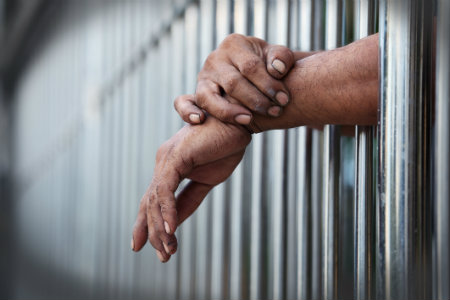Justice Reform
When we think about justice reform, though, we also think beyond the walls of the criminal justice system. Mass incarceration is profoundly harmful not only for prisoners, but also for children, families, and communities, which experience long-term disadvantages. More than half (54%) of inmates are parents of minor children. As sentencing laws have become more severe, greater proportions of children (especially children of color) are separated from their parents, and for longer periods. According to a 2015 report by Child Trends, 1 in 14 children has experienced parental incarceration. When incarceration disrupts nurturing relationships, innocent children are impacted. Communities with high levels of incarceration lose human capital as individuals are displaced, families torn apart, and institutions weakened. Research has shown that neighborhoods may experience changes in parenting patterns, employment opportunities, and community norms, all of which can increase poverty and restrict opportunities for self-efficacy. These social justice issues are largely ignored in public policy debates regarding criminal justice reform. Re-entry is another issue. Returning prisoners encounter multiple barriers to reintegration: many have weak ties to the job market, their families, and their communities, as a result of longer sentences. Prisoners with children who were placed in foster care for 15 months in a 22-month period risk losing parental rights, especially if they are unable to communicate with caseworkers and with their children (see the Adoption and Safe Families Act of 1997), and judges are unable to help preserve family relationships. Many former prisoners struggle with substance abuse or mental health problems; however, treatment is scarce in correctional facilities, and coordinated services after release are even less common and often have significant waitlists. Coupled with a lack of social networks in the labor force, these circumstances make it extremely difficult to secure basic necessities of life, including a job, housing, and transportation, which are critical for meeting the conditions of parole. High concentrations of residents leaving for prison and returning from prison and growing numbers of residents with limited employment prospects can cripple local communities. Local self-governance may be replaced by increased policing that alienates neighbors. These consequences disproportionately affect minority neighborhoods, and they reduce the capacity of all residents to be productive and help one another. When ex-offenders cannot find jobs and social support, they may return to criminal activity. Our Work on Justice ReformTask ForceIn 2015, the Global Alliance formed the Mass Incarceration Task Force with the aim of addressing the challenges related to this issue. In 2020 – with a vision for addressing issues beyond (but related to) mass incarceration, things like police reform and public safety – we renamed this working group the Justice Reform Task Force. Consensus WorkgroupIn 2017, the Consensus Workgroup released, "Policy Recommendations to the 115th Congress & Trump Administration on Behavioral Health Issues in the Criminal Justice System." We are a supporter and co-signer of the recommendations, which focus on addressing behavioral health issues in the criminal justice system in a coordinated, comprehensive fashion. The focal areas for which recommendations are made include: federal support, training, and technical assistance to state and local agencies; federal courts and prisons; behavioral health workforce development; federal research, evaluation, and coordination; and juvenile justice. Position Statement on ShacklingAll youth, regardless of their alleged offense, are shackled in proceedings in hundreds of juvenile courts across the country. Shackling can even occur in status offense cases in which a young person is brought to the court for non-criminal behavior (e.g., truancy). In many states, minors find themselves in handcuffs, leg irons, and belly chains as a routine, unquestioned practice. The Global Alliance is a strong supporter of best practices in juvenile justice. We believe that the shackling of juveniles in courtroom settings should be limited to the rarest of situations. Shackling should never be automatic or the presumptive practice of a juvenile court. In our position statement on shackling reform, we encourage an interdisciplinary dialogue among mental health professionals, child advocates, service providers, researchers, policymakers, and other stakeholders to develop and promote a more humane approach to addressing the needs of children and families involved in the juvenile justice system. Research
Our Spotlight features research in AJO on justice reform. Want to learn more?
What can you do?
|

